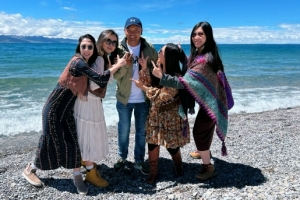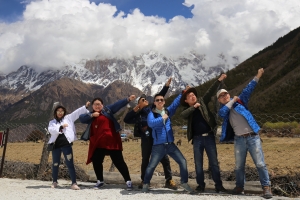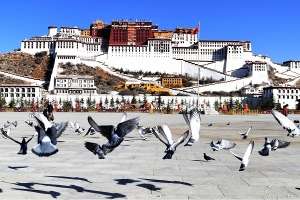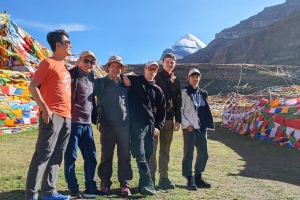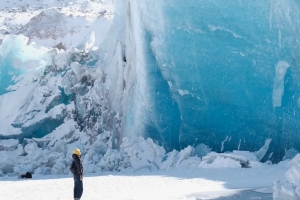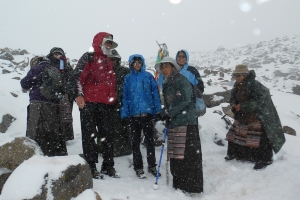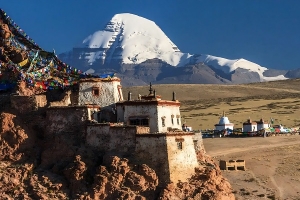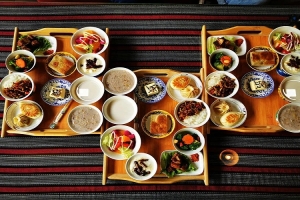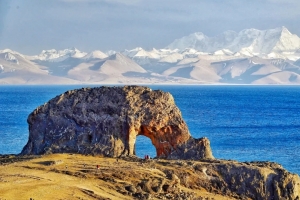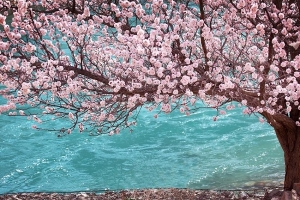Nestled high above the ancient capital of Lhasa, Tibet, Sera Monastery stands as a beacon of spiritual learning and cultural heritage. As one of the six great monasteries of the Gelug school, Sera Monastery not only played a pivotal role in the development of Tibetan Buddhism but also continues to serve as a center of religious study, debate, and artistic expression. This article delves into the rich history, intricate architecture, vibrant traditions, and enduring legacy of Sera Monastery, offering readers a complete guide to understanding its significance in Tibetan culture.
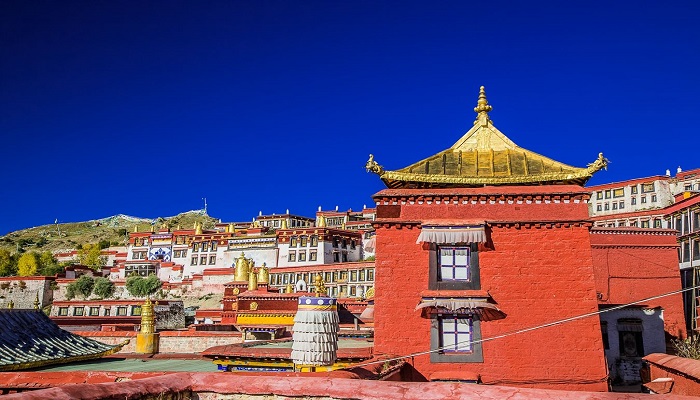
An Introduction to Sera Monastery
Located to the north of Lhasa, at an imposing altitude of approximately 3,700 meters (12,140 feet), Sera Monastery commands breathtaking views of the surrounding Himalayas and the city below. Established in 1419 by Jamchen Choje Sakya Yeshe—a prominent disciple of the revered master Tsongkhapa—the monastery quickly rose to prominence as one of the foremost institutions within the Gelug order. Known for its rigorous academic program, distinctive architectural features, and vibrant daily activities, Sera Monastery embodies the fusion of spiritual discipline and scholarly pursuit that has defined Tibetan Buddhism for centuries.
Key Facts at a Glance
- Buddhist School: Gelug
- Founding Year: 1419
- Founder: Jamchen Choje Sakya Yeshe, disciple of Tsongkhapa
- Location: North of Lhasa, Tibet
- Altitude: 3,700 meters / 12,140 feet
- Significance: One of the six great monasteries of the Gelug tradition
The Historical Tapestry of Sera Monastery
Sera Monastery’s origins are deeply intertwined with the life and teachings of Tsongkhapa, the visionary reformer who laid the groundwork for the Gelug school. During his meditation retreats in the remote caves that now form part of the Sera Utse Hermitage, Tsongkhapa imparted his insights into Buddhist philosophy and meditation. His teachings resonated with his disciples, most notably Jamchen Choje Sakya Yeshe, who went on to found Sera Monastery in 1419. This act of establishing a major monastic institution was not only a tribute to Tsongkhapa’s legacy but also a bold statement about the importance of disciplined study and debate in the practice of Buddhism.
Over the centuries, Sera Monastery evolved from a modest retreat into one of the most influential centers of Buddhist learning in Tibet. At its zenith, before the turbulent times of the Cultural Revolution, the monastery was home to over 5,000 monks. This vibrant community was dedicated to studying sacred texts, practicing meditation, and engaging in rigorous debates that honed their understanding of Buddhist doctrine.
The monastery complex originally boasted five colleges, each specializing in different aspects of Buddhist philosophy and ritual practice. However, the Cultural Revolution brought widespread disruption and loss to Tibetan cultural institutions. Although Sera Monastery survived the upheavals of that era, several of its colleges were damaged, and many ancient texts and priceless artworks were lost forever. Despite these setbacks, Sera remains a vital center for spiritual learning and continues to attract devoted practitioners and curious visitors from around the globe.
The Three Remaining Colleges
Today, the complex is home to three active colleges:
- Sera Me College: Often considered the spiritual heart of the monastery, Sera Me is known for its focus on traditional Buddhist teachings and philosophical debate.
- Sera Je College: This college holds a special place for families and young practitioners. With its famous Hayagriva (horse-headed deity) chapel, it is the destination for many Tibetan families who bring their children to receive blessings and to mark special rites of passage.
- Sera Ngagpa College: One of the oldest parts of the complex, this college continues the legacy of rigorous monastic education and preserves the historical traditions of the monastery.
These institutions have been central to preserving and transmitting the intellectual and spiritual heritage of the Gelug tradition, ensuring that the teachings of Tsongkhapa and his disciples continue to thrive.
Architectural Splendor and Symbolism of Sera Monastery
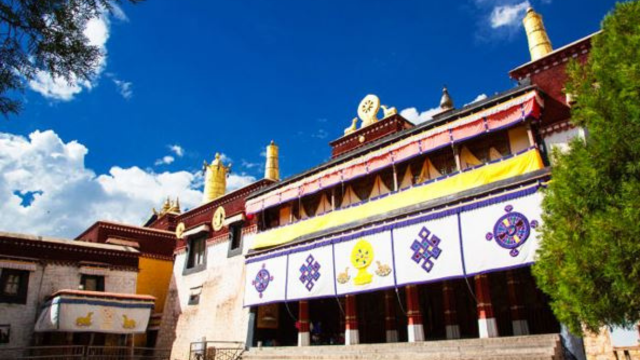
Sera Monastery is not only a center for learning but also a marvel of Tibetan architecture. Its sprawling complex is divided into two main sections: the Eastern and Western parts, each with its unique character and function. Visitors are advised to explore the site by moving in a clockwise direction—a traditional practice observed in many Tibetan monasteries to honor sacred space.
The Western Section: The Heart of Monastic Life
The Western section of Sera Monastery is particularly significant as it houses the three colleges—Sera Me, Sera Je, and Sera Ngagpa. Among these, Sera Je is renowned for its Hayagriva chapel, which is an important destination for Tibetan families seeking blessings for their children. The sight of youngsters emerging with a small ash mark on their noses is a common and moving reminder of the monastery’s continuing spiritual influence.
At the center of the Western complex is the magnificent Assembly Hall, or Tsokchen. Constructed around 1710, this four-story structure is supported by 125 pillars and features a grand skylight that illuminates the space with natural light. Upon entering the Assembly Hall, visitors are greeted by expansive murals depicting the Four Guardian Kings—protector deities of Tibetan Buddhism—and a series of large, intricately woven thangkas (religious banners) suspended from the ceiling.
The Assembly Hall: A Sacred Congregation
The Assembly Hall serves as the nucleus of the monastery’s spiritual and communal life. It is here that important ceremonies are conducted, and the main statues that represent the historical and religious legacy of the Gelug tradition are enshrined. The central figure is that of Jamchen Choje Sakya Yeshe, the monastery’s founder, whose statue commands respect and reverence. Surrounding him are statues of the future Buddha, Maitreya, and revered incarnations of the Dalai Lama, including the 5th, 7th, and 12th. A striking figure is also the master Tsongkhapa, accompanied by his foremost disciples, reminding all who enter of the lineage’s deep-rooted history.
The Assembly Hall is organized into several chapels spread across its floors:
- The Central Chapel: Dominated by a towering 6-meter statue of Maitreya, this chapel is a focal point for devotees seeking blessings and inspiration. The south wall of this chapel displays precious Kangyur texts, dating back to 1410. These scriptures, once housed in 105 volumes (with only 108 original scriptures, three of which were lost over time), are adorned with red lacquer covers and intricate gold carvings.
- The Second Chapel: On the upper level, a chapel dedicated to the thousand-armed Chenresig (Avalokiteshvara) captures the devotion of pilgrims. Here, faithful visitors can witness the traditional practice of pressing their heads against the statue, a gesture believed to invoke the deity’s compassion and blessing.
Symbolism in Architecture and Art
The design of Sera Monastery is imbued with symbolism. Every aspect, from the placement of statues to the layout of the courtyards, is intended to evoke the principles of Buddhist philosophy. The murals, carvings, and thangkas all serve as visual sermons, teaching complex doctrinal ideas through art and narrative. The deliberate arrangement of these elements underscores the importance of both study and practice in the life of a Buddhist monk, a theme that resonates throughout the monastery.
The Essence of Debate in Tibetan Buddhism
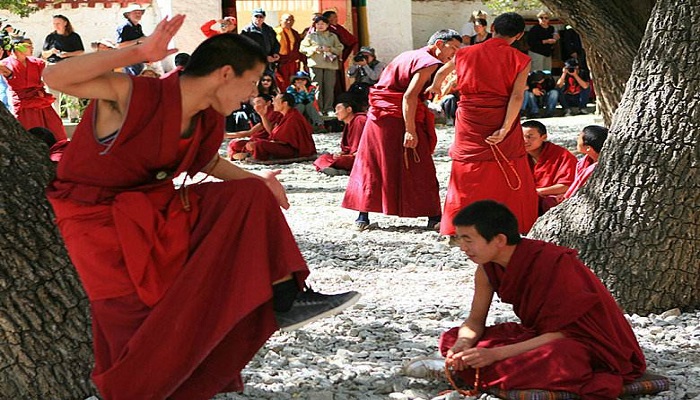
One of the most distinctive and captivating traditions at Sera Monastery is the daily practice of monks’ debates. These debates are far more than a ritualistic performance—they are a rigorous intellectual exercise and an essential component of the Buddhist educational system. In the Gelug tradition, debate is used as a tool to clarify and deepen understanding of the profound philosophical texts that form the core of their spiritual practice.
How the Debates Unfold
In the tree-lined debating courtyard of Sera Monastery, debates are held every day (except Sundays) starting in the mid-afternoon around 3:00 PM. The process is highly structured:
- Formation of Groups: Monks form groups, and the debates typically begin with a designated monk who poses a series of questions or presents a challenging statement.
- Interactive Responses: Sitting monks listen intently and prepare to respond. Once the questioning monk claps his hands, the response phase begins, with one or more monks offering detailed explanations and counterpoints.
- Gestures and Rhythm: The debates are characterized by a series of specific hand gestures and rapid exchanges. This ritualistic pattern not only demonstrates the monks’ mastery of their subject but also serves as an engaging performance for onlookers.
For many visitors, witnessing these debates is one of the most memorable aspects of a visit to Sera Monastery. The lively interactions, rapid-fire questioning, and the evident camaraderie among the monks provide a unique insight into the rigorous intellectual training that underpins Tibetan Buddhism.
The Role of Debate in Monastic Education
Debates at Sera are more than just a display of intellectual prowess—they are a vital method of internalizing and transmitting Buddhist teachings. Through these structured discussions, monks learn to analyze texts critically, articulate their understanding, and refine their interpretations of complex doctrines. This process not only hones their argumentative skills but also reinforces their commitment to a life of study, meditation, and ethical conduct.
Festivals and Cultural Celebrations of Sera Monastery
Beyond its role as a center of learning and debate, Sera Monastery is also a hub of cultural festivities.
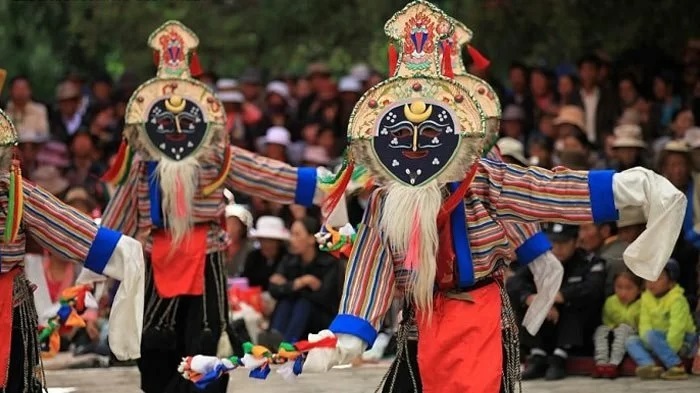
The Shoton Festival: A Celebration of Yogurt and Thangkas
One of the most significant celebrations is the annual Shoton Festival—also known as the Yogurt Festival—which draws pilgrims and locals alike. Traditionally, the summer months of May and June were a period of intense meditation. To avoid disturbing the natural balance and harming insects, monks would retreat into caves or remain secluded within the monastery. At the end of this period, the community would offer freshly made yogurt as a token of gratitude and respect.
The Shoton Festival, typically celebrated on the 29th day of the 6th lunar month (which usually falls in August by the Gregorian calendar), has grown into a major event. The celebrations begin at Drepung Monastery with the early display of a large thangka—a sacred image of the Buddha—which symbolizes the blessings of the divine. Later in the day, devotees make their way to Sera Monastery to receive similar blessings from another impressive thangka exhibited in the monastery.
The Cultural Impact of Festival Celebrations
The festival is more than just a religious event; it is a vibrant display of Tibetan culture. During Shoton, the normally quiet corridors of the monastery transform into a lively arena where traditional music, dance, and elaborate costumes take center stage. Hundreds of pilgrims don their finest attire and ornate jewelry as a mark of respect and celebration. This gathering not only reaffirms the community’s spiritual bonds but also provides an invaluable opportunity for cultural exchange and tourism, further cementing Sera Monastery’s role as a cultural landmark.
The Spiritual Benefits of Thangka Displays
The practice of displaying large thangkas during festivals like Shoton holds deep symbolic meaning. Thangkas are not merely decorative; they are considered to be potent symbols of divine grace and protection. By unveiling these sacred images in the open, the monastery creates an atmosphere charged with spiritual energy, inviting pilgrims to seek blessings, express devotion, and partake in the communal celebration of Buddhist teachings.
Experiencing Sera Monastery: A Visitor’s Guide
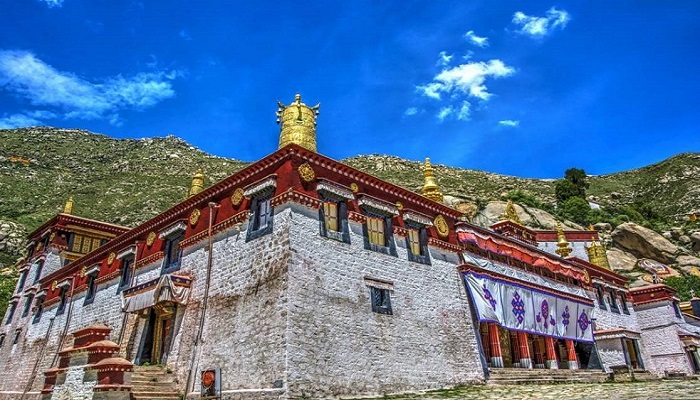
Visitors to Sera Monastery can expect an immersive experience that offers a glimpse into both the scholarly and spiritual life of Tibetan Buddhism. The sprawling complex, divided into Eastern and Western sections, invites exploration at a leisurely pace. It is important to note that when visiting Tibetan monasteries, a clockwise direction of travel is customary—a practice rooted in respect for the sacred spaces and traditions of the site.
Essential Tips for a Memorable Visit
- Dress Respectfully: As a religious site, Sera Monastery expects visitors to dress modestly. Long pants or skirts and shirts that cover the shoulders are recommended.
- Photography Guidelines: While it is acceptable to take photographs with a mobile phone, the use of professional cameras or video recording equipment is generally discouraged. This helps maintain the sanctity of the space and respects the privacy of the monks.
- Timing Your Visit: The optimal time to visit Sera Monastery is early in the afternoon—around 2:00 PM. This timing allows visitors to explore the Assembly Hall, stroll through the monastery complex, and even catch the afternoon debates in the courtyard before the chapels begin closing around 3:00 PM.
- Guided Tours: Consider hiring a local guide who can provide context and historical insights into the many architectural and artistic elements of the monastery. This enriches the overall experience and offers a deeper understanding of the site’s significance.
Exploring the Complex: Highlights and Hidden Gems
In addition to the well-known features like the Assembly Hall and the debating courtyard, the Sera Monastery complex contains numerous smaller chapels and shrines that are steeped in history. Visitors might also be intrigued by the colorful murals and intricate carvings that adorn the walls of various buildings. Each piece of art is a narrative in itself, depicting stories from Buddhist mythology and lessons in compassion, mindfulness, and ethical conduct.
For those with a keen interest in Tibetan art, the thangkas suspended from the high ceilings provide an awe-inspiring visual feast. These canvases are more than religious artifacts; they are masterpieces that encapsulate centuries of tradition and creative expression.
Sera Hermitage and Its Surroundings
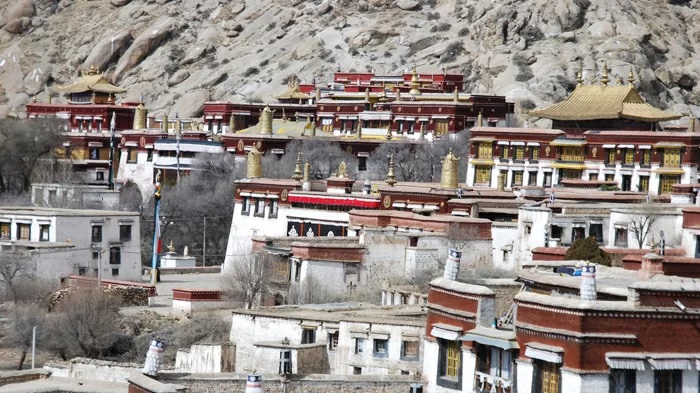
Beyond the Main Complex: The Sera Hermitage
While the monastery complex in Lhasa forms the heart of Sera’s religious activities, its influence extends to several smaller nunneries and temples scattered on the surrounding mountains. Known collectively as the Sera Hermitage, these sites offer visitors an opportunity to witness more secluded and intimate expressions of Tibetan spirituality.
Sera Utse: The Meditation Haven
One of the most compelling sites in the Sera Hermitage is Sera Utse—a yellow temple that perches on a mountain behind the main monastery. At its center lies the meditation cave where Tsongkhapa once engaged in deep reflection. Although Sera Utse suffered significant damage during the Cultural Revolution, restoration efforts are gradually reviving its former glory. The hike to Sera Utse is relatively short but demanding, and the pathway is being improved with a new road to facilitate easier access in the future. Today, this site stands as a testament to resilience and the enduring power of meditation in Tibetan Buddhism.
Pabongka: The Ancient Stupa Legacy
Another gem within the Sera Hermitage is Pabongka, a site of immense historical and spiritual importance. Dating back to the 7th century, Pabongka is associated with Tibetan King Songtsen Gompo, who is said to have meditated in one of its sacred caves. Later, Tsongkhapa himself spent time in this area, further cementing its spiritual significance. Pabongka is home to ancient stupas, and its artifacts include a self-arising image of the Rigsum Gompo Trinity as well as a carved mantra, “Om Mani Padme Hum.” This site not only highlights the ancient roots of Tibetan Buddhism but also offers visitors a tangible connection to its storied past.
The Spiritual and Cultural Resonance of Sera Monastery
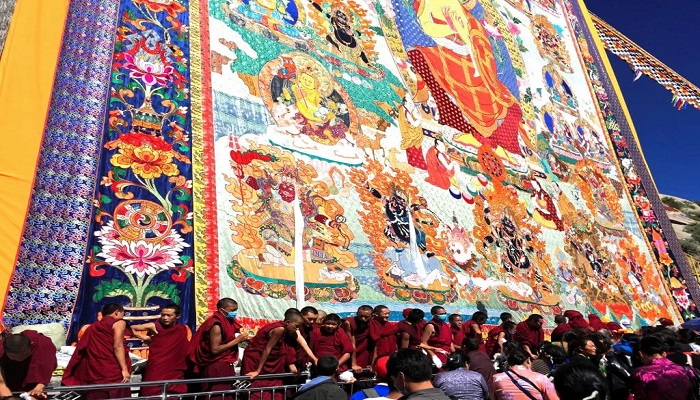
Sera Monastery’s influence reaches far beyond the confines of its stone walls. For Tibetans, it is a living repository of cultural identity—a place where the teachings of Buddhism are both studied and celebrated. Over centuries, Sera has been a sanctuary for spiritual seekers, a hub for academic debate, and a symbol of resilience in the face of political and cultural upheaval.
The monastery’s history reflects the broader narrative of Tibet itself: a journey marked by periods of flourishing intellectual and artistic achievement, followed by times of hardship and renewal. Today, Sera stands as a vibrant center where tradition meets modernity. It offers a unique glimpse into the ways in which ancient practices continue to evolve and adapt in a rapidly changing world.
One of the most remarkable aspects of Sera Monastery is its ability to weave art and architecture into the very fabric of its religious practice. The murals, thangkas, and sculptures found throughout the complex are not merely decorative; they are integral to the monastic curriculum. These works of art encapsulate the narratives of Buddhist teachings, transforming the monastery into an open-air museum of spiritual iconography.
Visitors walking through the corridors of Sera Monastery will notice that every wall and pillar seems to tell a story. The carved figures, the detailed depictions of deities, and the symbolic use of color and form all serve to inspire reflection and devotion. This integration of art and spirituality is a hallmark of Tibetan Buddhism and is one of the reasons why Sera continues to be a vital and inspiring destination for both pilgrims and tourists alike.
Practical Information and Tips for Sera Monastery Travelers
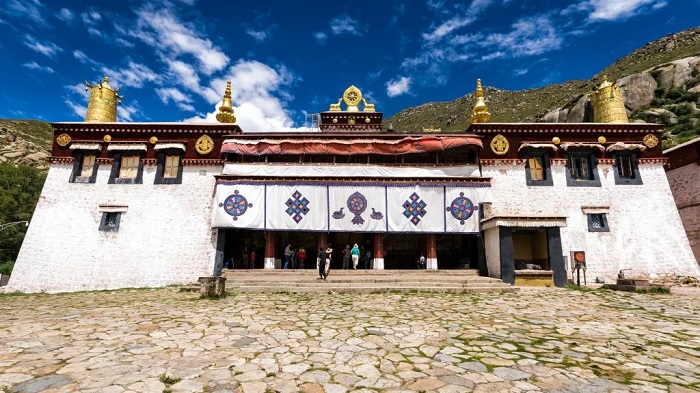
For first-time visitors, the vastness of Sera Monastery can seem overwhelming. To make the most of your visit, consider the following practical tips:
- Plan for Altitude: At 3,700 meters, the high altitude may affect some visitors. It’s wise to acclimatize in Lhasa before venturing to the monastery and to stay well-hydrated throughout your visit.
- Mind the Footsteps: As you explore, remember the tradition of walking clockwise. This practice is not only respectful but also aligns with centuries-old spiritual customs.
- Cultural Sensitivity: Interact with the local community with an open heart and respect their customs. Whether you are asking for directions or engaging in conversation, politeness and humility are always appreciated.
- Local Guides: Hiring a knowledgeable local guide can greatly enhance your experience, offering insights into the history, symbolism, and traditions that you might otherwise miss.
Best Times to Visit
While Sera Monastery is a year-round attraction, the best times to visit are typically in the early afternoon and during special festival seasons. An early afternoon visit allows you to witness the fascinating monk debates, explore the Assembly Hall before it closes, and enjoy the ambient energy of the complex. Meanwhile, the Shoton Festival season offers a unique opportunity to see the monastery in its most vibrant and celebratory form, with throngs of pilgrims and locals adding to the atmosphere of reverence and festivity.
Engaging with Local Culture
Visitors are often struck by the warmth and hospitality of the local Tibetan people. The cultural exchange is an integral part of any visit to Sera Monastery. Take the time to learn a few basic Tibetan phrases, sample local cuisine, and attend cultural performances if available. Engaging with the community not only enriches your experience but also deepens your understanding of the cultural and spiritual tapestry that is Tibetan Buddhism.
The Enduring Spirit of Sera Monastery
Sera Monastery is a remarkable institution that encapsulates the essence of Tibetan Buddhism. From its origins as a modest hermitage established by a devoted disciple of Tsongkhapa to its current status as a revered center of learning and cultural celebration, Sera Monastery offers a window into the spiritual heart of Tibet. For scholars, pilgrims, and curious travelers alike, Sera Monastery remains a living testament to the power of tradition and the enduring pursuit of spiritual enlightenment. As you explore its hallowed halls, you become part of a legacy that has shaped Tibetan culture for over six centuries—a legacy that continues to inspire and enlighten in the face of modern challenges.

